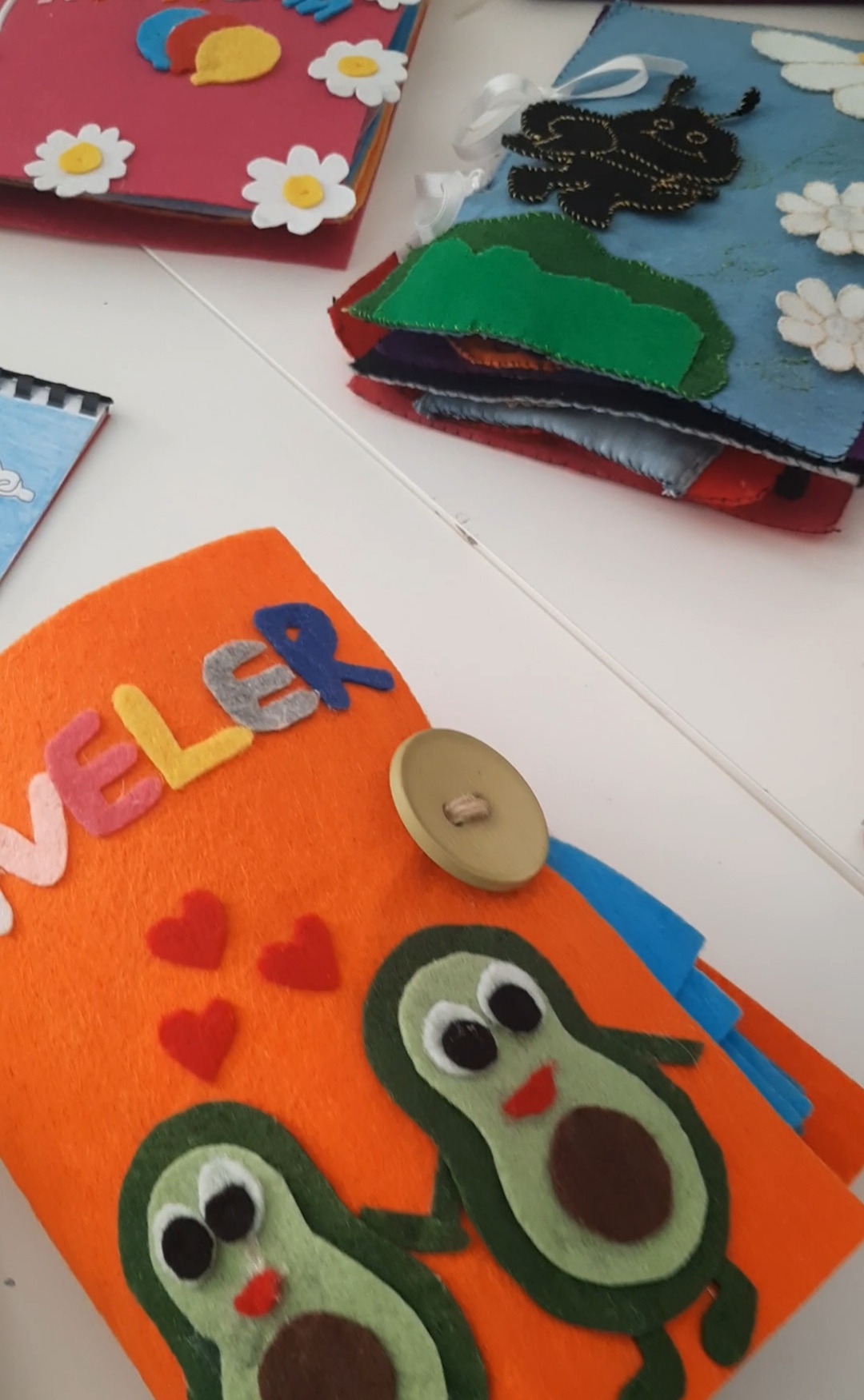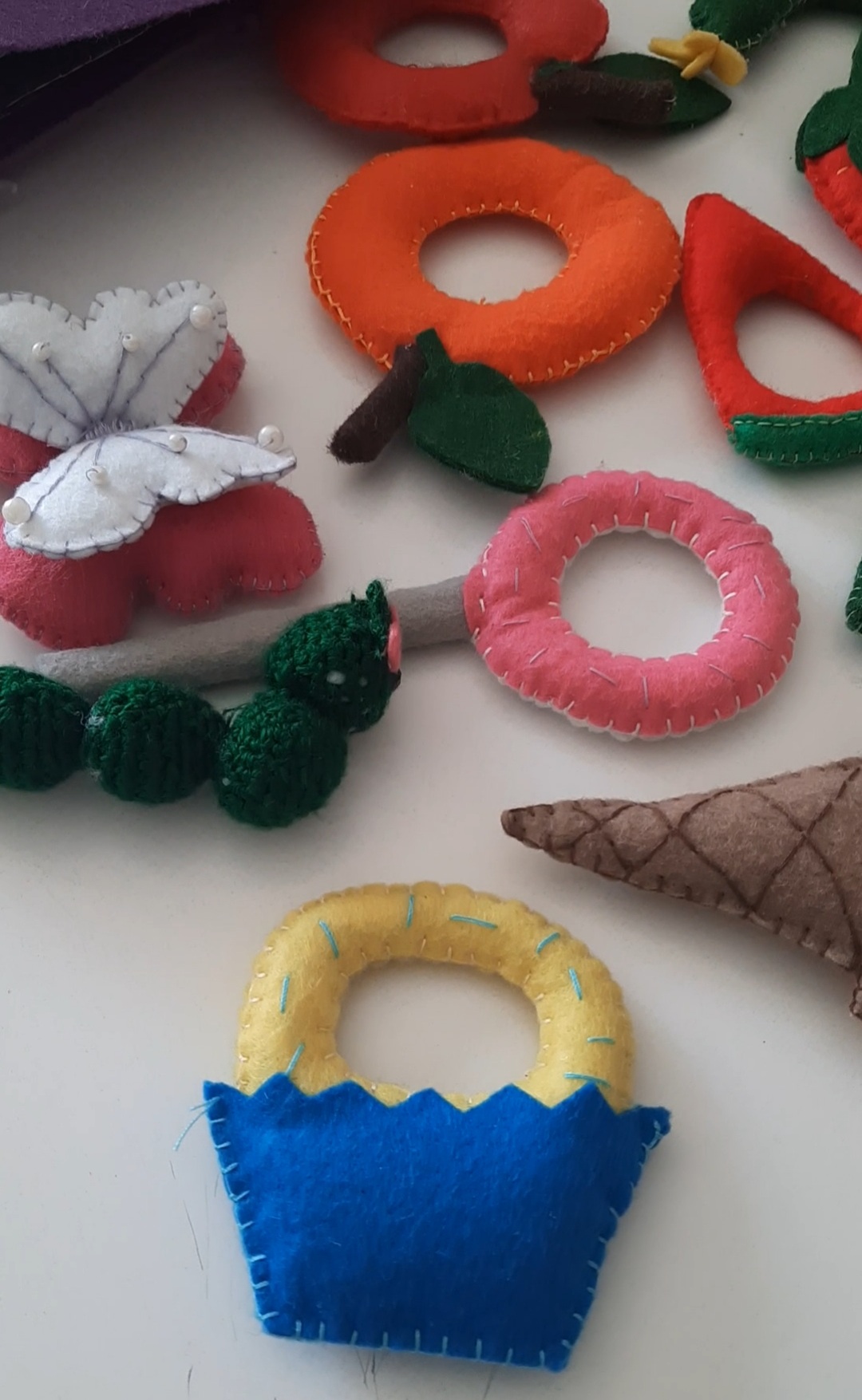Within the scope of the "Children's Literature" course, books were designed for children between the ages of 0-18 together with the students. First of all, a planning was made about which age group each student would like to design and what kind of book they wanted to design. After the planning was made, researches were made on the appropriate material selector and guidance was provided for the students to start their studies in a way that they could use their creativity. These books also include activities that support children's cognitive, language, social-emotional and self-care skills. Books differ by age group. While the books designed for the 0-2 age group are called ABC Books, they are made of materials such as felt, eva, fleece, fabric that will not harm children in their construction and are machine or hand-stitched. Among the books for the 3-6 age group, there are examples where the stories were written, drawn and painted by the students and then brought to book format.
Children's literature is all of the oral and written works prepared for the dreams, feelings and thoughts of people in this age range in order to meet the needs of children aged 2-14. Children's growth and development; It is all of the verbal and written outputs that appeal to their dreams, feelings, thoughts, abilities and tastes, and contribute to their fun while educating. A book is always interesting for a child. When we look at the 0-6 age child-book relationship, it is seen that different features gain importance at every age.
Within the scope of children's literature;
• Until the age of two (they are called first books), cardboard or cloth books, which consist of pictures of the objects that

she sees, knows and uses, do not have a story and are almost like toys for her.
• At the age of 2-3, the child, whose efforts to develop his language intensifies, develops his vocabulary. He learns the basic structure of the language, makes multi-word combinations, starts to use demonstrative adjectives, demonstrative pronouns, negative structures and questions. In this period, it is seen that there are sound repetitions and they prefer to listen to rhyme-style products over and over.
• At the age of 3-4, the child has learned the basic structure of the language. Can express feelings and thoughts, relationships through language. He is interested in picture books about the events in his life. Begins to establish a relationship between the narrated event and the picture. He listens carefully to the short picture story read to him and asks it to be read over and over again.
• At the age of 4-5, language has become a means of communication that is used accurately and easily. There is an increase in the number of words. Speech began in accordance with grammatical rules.
• At the age of 4-5, he likes the stories based on the imagination, while at the age of 6 he wants to learn about the truth. Natural events, space, the lives of animals, machines are the subjects that attract the attention of children. They also love to create stories for themselves.
Why is Children's Literature Important?
In today's societies, the child's world, which is limited to the family environment at the beginning, develops with the environment of friends, visual and auditory mass media, and stimuli such as radio, television, cinema, newspaper and book. Growing up in a stimulating and developing environment by touching with various tools, toys and books, playing games, increases the level of development and civilization. Children's books and magazines, which have become an area that developed countries focus on meticulously as a requirement of modern education and deal with scientific approaches, are educational tools in the formation of this environment. These permanently affect the child's sensations, perceptions and tastes.
Benefits of book experience in early childhood;


 she sees, knows and uses, do not have a story and are almost like toys for her.
she sees, knows and uses, do not have a story and are almost like toys for her.